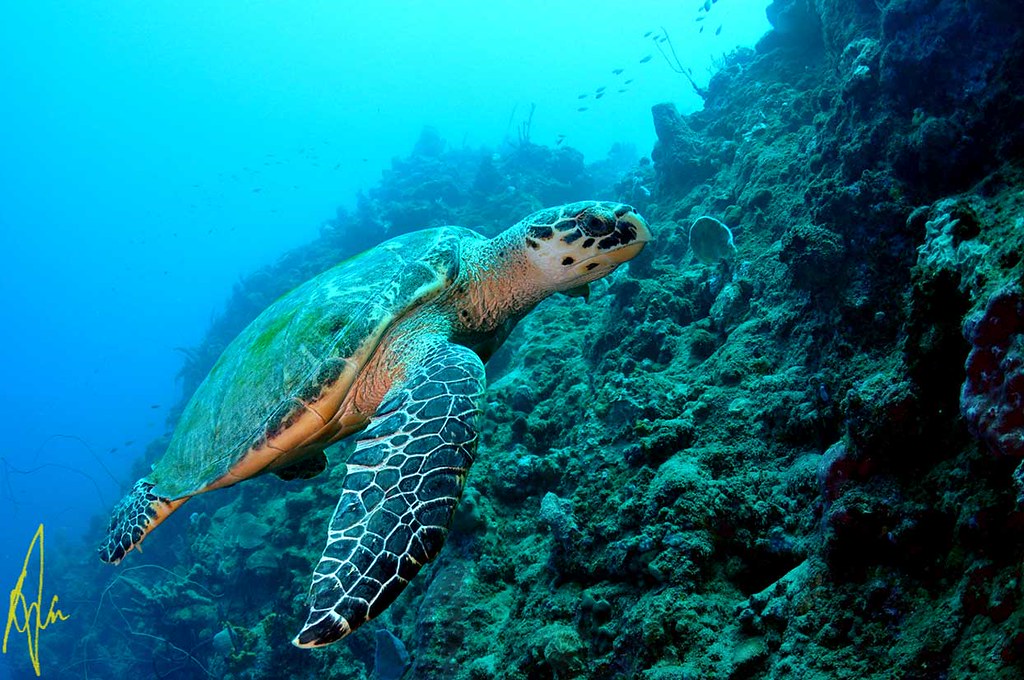Tropical Treasures
Dominica’s most popular dive sites are situated off its western coast, where the waters are far calmer than those on its more turbulent Atlantic side. Boasting shallow dive vistas filled with frogfish, seahorses, flying gurnards, and incredible sponges, the coastline also offers deeper dive options where dramatic pinnacles and swim-throughs provide the backdrop for schools of blue chromis, eels, and barracuda. Scuba diving packages in Dominica are plentiful, and companies like Dive Dominica and their partner accommodations put daily boat dives, night dives, and a range of beginner and intermediate PADI courses at your disposal. Getting this tropical island to divulge its diving secrets is best handled by taking advantage of local tour operators who are intimately familiar with the multitude of unique sites lining its shores.
Most scuba diving sites are only a short boat trip off the coast, or are easily accessible from the shoreline. In the southwest corner of the island, Soufriere Scotts Head Marine Reserve is an immense, submerged volcanic crater that offers the chance to explore active underwater vents, walls, and drop-offs, as well as endless coral reefs teeming with marine life. In just 5 to 10 meters (16 to 33 feet) of water at Cottage Point, the remains of an 18th century wreck can be found, perched among an eerie but striking collection of pinnacles off Portsmouth. Meanwhile, on the south drop-off of the Grande Savane flats, Whale Shark Reef lets divers explore a fall from an incredible 180 to well over 425 meters (55 to 130 feet), while viewing impressive tube and barrel sponges, and commonplace sightings of arrow crabs, cleaner shrimp, spotted flamingo tongue snails, and Spanish mackerel. From swimming through the heated bubbles at geothermal sites like Champagne, to discovering rare fish species at The Cabrits, diving vacations in Dominica truly do have it all.
Little Island, Big Adventure
The fertile soil and volcanic origins of Dominica have created a topography that’s dominated more by lush rainforest, mountain lakes, waterfalls, and hot springs than by the soft white sandy beaches of the typical Caribbean destination. Known as “The Nature Island,” Dominica’s rainforests cover two thirds of its landmass, and are home to more than 1200 species of plants. This jungle-like setting offers far more than a stunning tropical backdrop, however. The island’s culture stems from a unique blend of English, French, African, and Carib roots, and with a population barely topping 70,000, the intimacy of its local music, and colourful costumes and pageantry, are abundantly available for all to enjoy.
Although Dominica’s airport, located about an hour outside the capital of Roseau, doesn’t accommodate direct flights from North America, visitors will find it easy to reach the island through a large number of travel hubs, including Puerto Rico and Barbados. Divers of all levels will soon discover that the opportunity for adventure presented by the volcanic vents, caverns, and vast sponge and coral gardens of this English-speaking jewel make it a highly worthwhile destination, despite the extra bit of effort required to get there.
Diving in Dominica is comfortable all year as both water and air temperatures hover between mid-20s C (high 70s F) in the winter and high 20s C (mid-80s F) in the summer. The island’s mild tropical climate is generally humid, with the heaviest rains falling from July through October, and hurricane season occupying the late summer months. While this little island may be only 750 square kilometres (460 square miles) in size, it’s big on adventure. Bird watching in the island’s forest and woodlands, hiking to its spectacular collection of waterfalls, and opportunities to kayak one of more than 300 pristine and boulder-strewn rivers means there’s never a dull moment once you step out of your scuba gear.




